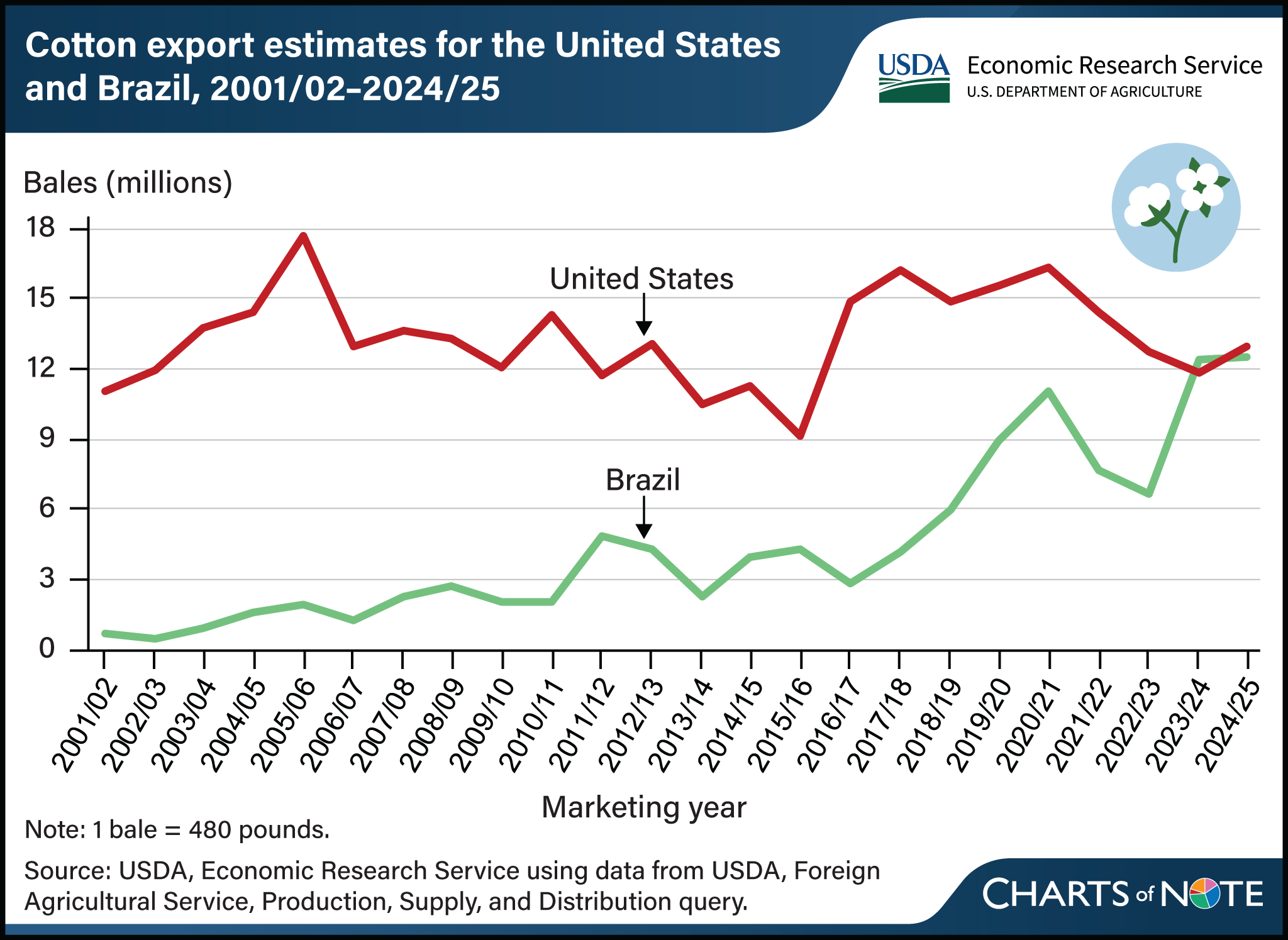United States and Brazil compete as top global cotton exporter
- by Taylor Dew and Leslie Meyer
- 7/24/2024

The United States has been the leading raw cotton exporter to the world virtually every year for more than 100 years. Leading export nation status was relinquished by the United States just a few times over the last century, most recently to Uzbekistan in the 1992/93 marketing year (August–July). U.S.-grown cotton was once principally used in domestic mills, but raw cotton exports became the dominant use in the early 2000s. Mills in other countries—particularly China—expanded textile and apparel product exports following developed countries’ phaseout of import quotas. Most U.S.-grown cotton is now destined for foreign mills and subject to increased competition from other cotton-producing countries. In recent years, Brazil has gradually become a major cotton export competitor, particularly as domestic cotton production expanded to the Center-West region of the country. On favorable conditions, Brazil’s 2023/24 cotton crop is estimated at a record 14.6 million bales, while U.S. production decreased because of drought in the Southwest. USDA’s June 2024 World Agricultural Supply and Demand Estimates (WASDE) report forecast Brazil’s 2023/24 cotton exports at 12.4 million bales, surpassing U.S. exports to become the largest global exporter. For 2024/25, the United States is projected to reclaim the role as top cotton exporter, as U.S. production is projected to rebound. This chart is drawn from the USDA, Economic Research Service Cotton and Wool Outlook: June 2024.
We’d welcome your feedback!
Would you be willing to answer a few quick questions about your experience?

